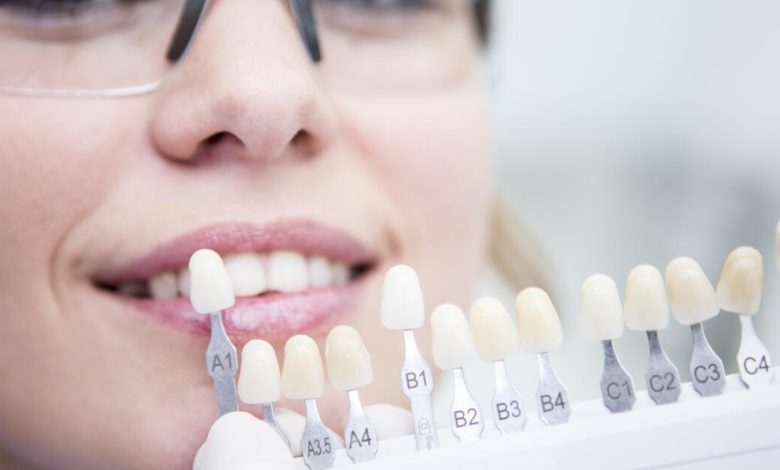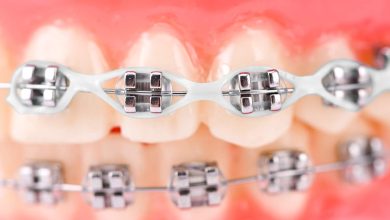10 ways to fill a gap between teeth

The gap between your teeth can make you feel self-conscious, especially if you have a big smile and the gap makes your smile look crooked. These days, it’s not difficult to fix that gap between your teeth, whether it’s small or large, as there are so many different options available to choose from. Whether you want to eliminate the gap by straightening your teeth or fill it with something appealing to look at, these 10 ways to fill a gap between teeth will help you get started and find the solution that best suits your needs and desires.
1) A dental bond
When you have spaces or gaps in your smile, it can take away from your confidence. A dental bond is an affordable way to close those gaps and cover unsightly cracks or chips that can develop over time. Dental bonds come in all shapes and sizes, so your options are virtually limitless. You’ll need two dental visits for this fix: one appointment to apply a liquid plastic material into the space and then another visit to apply light-cured resin onto top of it. Bonding isn’t meant as long-term solution; instead, it should be used as an interim fix until you can afford more permanent solutions like porcelain veneers or tooth-colored composite filling materials.
2) Dental braces
The easiest way to cover a gap is with dental braces. For adults, these are less conspicuous than they used to be and can even be colored so they blend in with your smile. If you don’t want metal bands on your teeth, consider clear aligners—they’re almost invisible! And if you don’t mind getting colored bands, take a look at Invisalign. The best part about braces is that once they’re taken off (the process itself takes several months), you won’t have any telltale traces of them; only your dentist will know what it took for you to get straightened out.
3) Dental veneers
With veneers, dentists can design custom-made tooth-shaped shells that are very thin and crafted out of porcelain or resin. They’re then bonded directly onto the front surface of your natural teeth with dental cement. (The glue is stronger than enamel, which means it will never chip or wear away.) A lot of people shy away from veneers because they cost a good deal more than other cosmetic treatments; you can expect to pay $500–$1,000 per tooth. For many people, though, that’s less expensive than getting caps or crowns on each individual tooth.
4) Tooth-colored filling material
Dentists use tooth-colored filling material to conceal small chips and gaps in your smile. The benefit of using tooth-colored materials is that they are so inconspicuous that no one will know you’ve used them—and you won’t have to worry about your natural grin looking fake. Many tooth-colored filling materials aren’t as resilient as amalgam, but most dental professionals use them because they are less invasive. For example, some clinicians use porcelain inlays to cover teeth gap filling appear more natural; however, if you want something long lasting, then it might be best to go with veneers or crowns made from ceramic or porcelain.
5) Invisalign invisible braces
These are clear braces that use a series of clear aligners in place of metal brackets and wires. Invisalign is pricey, but could be worth it for adults who don’t want their treatments to show. The process involves wearing a new set of aligners every few weeks; each time, your smile gets closer to its final look. And after you’ve finished with all your aligners, you may still have some adjustments made by an orthodontist before getting new retainers and feeling comfortable with your beautiful smile! The only real downside is that they’re more noticeable than other types of invisible braces. Still, if that’s not an issue for you (or even if it is), then it might be right for you!
6) Porcelain veneers (press on ceramic veneers)
Porcelain veneers are an extremely popular option for those who want to close gaps or replace old and misshapen veneers. Porcelain dental veneers are one of the more expensive options, costing anywhere from $3,000-$6,000 on average (though some more extensive procedures can cost upwards of $15,000).
7) Teeth whitening
Teeth whitening is one of those things that most people don’t do until they absolutely have to—but it shouldn’t be. You should whiten your teeth at least once or twice a year, whether you have visible stains or not. That leads to healthier gums and better overall oral hygiene. In other words, your teeth might actually look whiter without the actual bleaching because they’re less prone to staining.
8) Gold crowns or porcelain fused to metal crowns (PFM)
A gold crown is like a cap for your tooth. Porcelain fused to metal crowns offer fewer long-term problems than gold crowns, since they can’t flake off or change color as easily. There’s one main disadvantage: They typically cost about 25 percent more than a typical gold restoration because of higher labor costs involved with fabricating them on-site and additional fees associated with setting up an on-site lab.
9) Lumineers tooth-colored veneer restorations (3D porcelain laminates)
Lumineers tooth-colored veneer restorations can help cover gaps in your smile and address other cosmetic issues, such as broken or misshapen teeth. Invisalign clear aligners: If you don’t want to wear traditional metal braces, Invisalign clear aligners are another option for correcting your smile. Composite Fillings: Composite fillings are a common way of dealing with large gaps in teeth.
10) Composite resin (tooth colored filling material)
Composite resin is a tooth-colored filling material that takes multiple steps. Finally, once that has cured for two weeks (after which time you can switch to permanent cement), you have an invisible craze line on either side of your smile where filling meets tooth.




